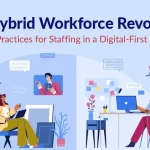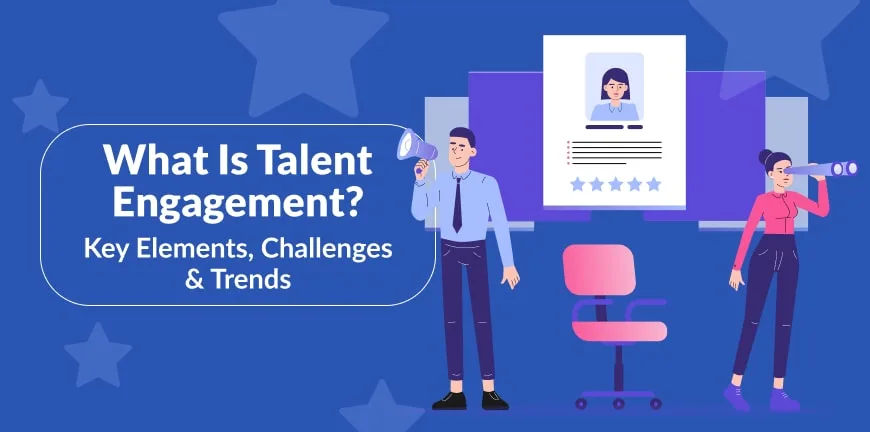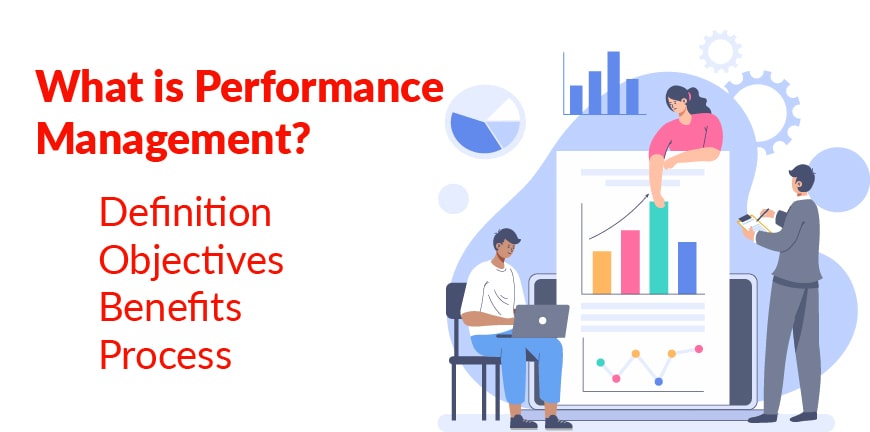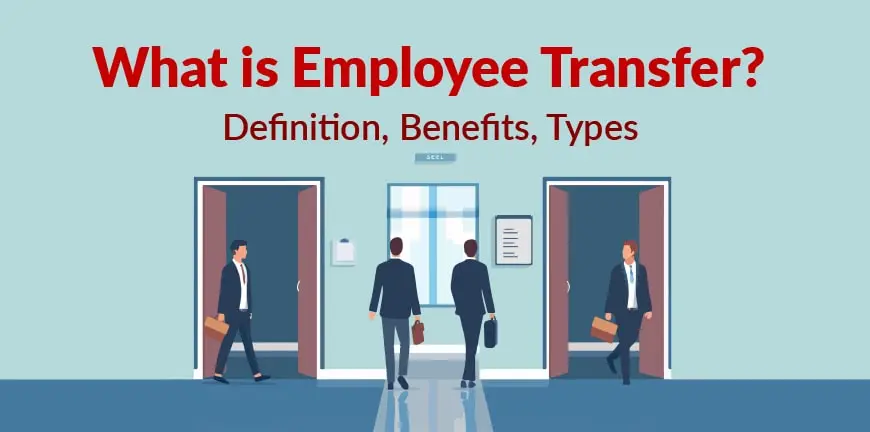
Best Career Options After Learning Japanese in 2025
29/07/2025
The Hybrid Workforce Revolution: Trends and Best Practices
29/07/2025- What Is Talent Engagement?
- What Are the Key Elements of Talent Engagement?
- What Services Are Included in Talent Engagement?
- Why Is Talent Engagement Important?
- What is the Talent Engagement Process?
- What Are the Challenges in Talent Engagement?
- What are the Key Trends in Talent Engagement?
- Frequently Asked Questions (FAQs)
Talent engagement is a fresh new feather added to the cap of high-octane workforces in today’s hyper-competitive job market. Drawing top-notch professionals is not all; what truly drives businesses to the top is keeping the manpower involved, empowered, and connected. The concept transcends perks and bulky compensations; it is about facilitating thoughtful experiences, creating an emotional connection, and nurturing a space where working individuals feel respected and motivated to flourish.
What Is Talent Engagement?
Talent engagement refers to how individuals working in an organization connect with their work and how they feel about working in a particular work environment. An engaged talent is when employees are invested in the work culture and align their vision with that of the company. It is about how a company includes its employees and keeps them involved in all facets of company operations, from hiring to interactions and outcomes.
The importance of talent management is paramount, especially today, as organizations are creating a landscape where a worker’s experience accentuates growth and success. It is all about weaving thoughtful memories for individuals, a safe space where they are treasured and appreciated.
As of 2024, only 21% of employees worldwide report being actively engaged at work, a decline from 23% the prior year. Engagement among managers dropped from 30% to 27%, while individual contributor engagement held steady at 18%
What Are the Key Elements of Talent Engagement?
As the modern workforce progresses, business leaders are putting in immense efforts to overcome the new manpower challenges, and one of their primary focuses is talent engagement and retention. Let us check out some of the key elements that enhance talent management:
1. Providing Clear Objectives
Today, young workers join companies not just for a fat cheque, but they are driven to seek a meaningful work journey where they can gain impactful experiences, learn meaningful skills, and align their work values to align with their values.
They need a clear perspective and purpose so that they are motivated to work and contribute effortlessly.
Employers must formulate a manpower plan that involves the input of employees, co-creating goals that cater to the purpose of the team and company.
To make the employees find deeper purpose, business leaders can offer cross-departmental projects or tasks with social impact.
Management must try connecting daily work responsibilities to productive outcomes and values, driving employees to work towards a common mission.
2. Robust Leadership and Loyalty
A true leader in today’s fast-paced business landscape is the one who understands the importance of talent management and manages it mindfully.
A leader is someone whose primary goal is to build trust amongst their employees, and they are certain that their leader is honest, trustworthy, and empathetic in a way that they feel safe, respected driven to put their best foot forward.
Today, leadership is not about exerting authority; it is constructed slowly through transparent and genuine actions.
A good leader is someone real, practical, and not pretentious, expressing concern and care about the welfare of employees and understanding their grievances and hurdles.
They are transparent communicators who openly share their decisions, changes, or concerns related to work, also stating the reasons.
They will never back out of giving credit to employees who perform well and are open to criticism and owning mistakes.
Satya Nadella, CEO, Microsoft, is often cited as an epitome of empathetic, transparent leadership that rejuvenated culture and engagement.
3. Career Progress and Growth Platforms
Organizations must craft a talent engagement model that involves career growth scopes for employees. Individuals today don’t falter when it comes to upgrading themselves; they are keen on learning and honing their skills.
Companies must invest in learning and development programs. They must offer continuous learning platforms and methods, design career paths that are role-focused, and cater to emerging business requirements.
Businesses must outline and talk about career structures and roles to help employees picture their growth pattern.
Another important aspect is offering training and mentorship, guiding employees to handle periods of transition or sudden developments.
Organizations must also encourage colleague-to-colleague learning and include leadership mentorship where individuals are nurtured to become future managers internally.
4. Accolades and Recognition
One of the most powerful tools in accelerating engagement is recognition. The self-esteem of employees spikes even if their leaders acknowledge their smallest task.
Recognition not only pushes teams to move ahead with vigour but also uplifts morale, improving teamwork. It is necessary for organizations to not just reward the best performers but also appreciate small wins.
Organizations must be prompt in recognizing individuals, as slow and delayed appreciations lose impetus.
5. Independence and Empowerment
Employees are loyal and dedicated to an organization when they are given a certain level of importance and entrusted with significant responsibilities.
When organizations openly trust employees to make critical decisions, they feel driven and respected, and are more likely to stay longer, delivering productive outputs.
One thing that organizations must stop doing is micromanaging, as it is something that ruins motivation. curtails creativity and indicates dearth of trust.
Empowerment is a strong driver of job satisfaction, enhanced engagement, and a way to attain greater goals.
What Services Are Included in Talent Engagement?
A talent engagement process entails a wide variety of services aiming to motivate, develop, and keep employees long-term. The services are crafted to cultivate intensified connections between organizations and employees. Let us have a look at some of them:
1. Recruitment and Onboarding
The first step in understanding the importance of talent engagement is for organizations to facilitate the initial stages of acquiring talent.
The inception of the work journey for employees is vital, and it should be a pleasant experience for them.
Organizations and HR leaders must ensure that onboarding is structured, making the integration of new workers easy.
The new employees must go through a proper orientation program where they are introduced to teams. provided clarity on their role and learn about the culture and work environment.
2. Managing Employee Experience
The experience of an employee is in the hands of the management and business leaders, and they must ensure a smooth journey by constantly monitoring and facilitating enhancement processes.
They must focus on conducting surveys and analysis to keep track of sentiments and performance.
They must also craft moments that are monumental for employees, making their journey memorable.
3. Ensuring Welfare and Work-Life Balance
The key to successful talent engagement strategies is to manage the mental and emotional health of employees by introducing mental wellness and stress management programs.
An effective way is to offer flexible work policies enabling workers to remain proactive and engaged.
A flexible work model uplifts employee sentiments and motivates employees to become more productive and loyal.
4. Inclusive Work Culture Initiatives
The era of including individuals from across borders is here. Organizations must work towards promoting a recruitment process that is devoid of any bias.
An employee feels wanted if their culture and perspective are embraced and are likely to remain in the organization for a longer time.
Other aspects, like an inclusive communication system, must be integrated so that there is clarity in understanding varied viewpoints.
Why Is Talent Engagement Important?
The importance of talent engagement is insurmountable, especially in a world where competition is at its peak. Business leaders must fathom that skilled talent can be kept long-term only if they truly care about a particular organization.
Talent engagement matters as employees who are engaged will be extra zealous and focused on work, resulting in accelerated productivity and high-octane teams.
A satisfied talent will be proactive in sharing new ideas that can lead to significant changes in policies, business functions, etc.
A happy employee delivers best-in-class outcomes and services, satisfying client needs, and presenting an improved brand image.
What is the Talent Engagement Process?
A talent engagement process is a meticulously planned process that focuses on cultivating strong bonds between an employee, their job, and the organization.
It is a method where a supportive and positive work landscape is offered to workers, where they feel satisfied, respected, and heard.
They, in turn, are major contributors to the growth and development of organizations, helping them to stay ahead of the curve.
What Are the Challenges in Talent Engagement?
In the age where there is a growing trend of individuals preferring to work from home and seldom attend the office; it becomes difficult for organizations to keep employees working from various locations engaged and motivated.
As soon as businesses understand the importance of talent engagement, they must begin to work on the hurdles that will come along. Let us check out a few of the challenges:
1. Insufficient Career Growth and Development Efforts
Employees often lose interest in work and feel disoriented when they see that there is no clear way forward in terms of their growth prospects. There may be limited or no opportunities offered for learning and upgrading skills. This culture demotivates them as they feel disconnected and might lose faith.
2. Inadequate Communication and Imperfect Leadership
It is not a good sign for organizations if their leaders don’t comprehend the criticality and importance of talent engagement. Employees in the modern job space are smart and focused, but if they receive improper guidance or inconsistent support from their bosses or managers, they can lose momentum and flip instantly. A dearth of transparency and sketchy communication leads to individuals losing trust.
3. Inadequacy in Rewarding and Recognizing Talent
Sometimes organizations fail to realize that not giving proper acknowledgements and rewards to deserving employees might make them feel discontented. It is essential to make employees feel special and part of the team and company by appreciating their work and rewarding them with personalized incentives.
4. Values and Actions Do Not Match
Employees demand a purpose and are keen on working in line with the organization. However, when they see that there is a misplacement of values, and promises made are not being met, they might lose focus. They believe in an authentic system, and if they see that values are only for documentation and no action, it leads to a rift between them and the leadership.
What are the Key Trends in Talent Engagement?
By now, we have come to terms with the importance of talent engagement in an era that is infused with technological advancements and a high level of competition. It is for enterprises, recruiters, and business leaders to identify it and adopt the best practices in talent engagement. Let us explore some of the trends.
- Providing Personalized Tech-Enabled Approach- The new norm in talent engagement is to give a personal touch to employees by utilizing technologies like AI and data to design manpower engagement plans catering to the roles, goals, and preferences of employees.
- Career Growth and Internal Talent Opportunities- There is an emerging trend where engagement is witnessing a surge when there are clear career pathways crafted for employees.
Organizations are focusing on advocating mentorship sessions, talent workshops, etc, and investing in retaining employees. - Constant Feedback and Acknowledgement- Employees today yearn for spontaneous reactions and feedback, as they can work accordingly and get to know the areas where they can improve.
- Gone are the days when workers waited for an annual review session. Today, it is all about continuity in feedback, and it is also about planning recognition modules and making room for further employee development.
- Recruiting People Based on Skills- Companies are no longer focused on employing individuals with previous experience; they are now focused on recruiting talented individuals who have the skills to manage job roles that are relevant today.
Key Takeaways
- Leadership, career Development, and clear objectives are core engineers
- Emotional connection is more important than perks
- Empowerment and rewards enhance trust and performance
- Personalized and tech touch comprise modern engagement
- Challenges can be combated with proper planning
Frequently Asked Questions (FAQs)
1. What’s the difference between engagement and satisfaction?
Employee satisfaction refers to the level of contentment of an employee towards their job and working conditions, while engagement is more deep-seated as it deals with the emotional connection and commitment of an employee towards their organization and work.
2. What is talent engagement?
Talent engagement is how deeply an employee is emotionally invested and committed to their work and company.
3. Why is talent engagement important?
Talent engagement is very important as it nurtures an environment of positivity with a productive and loyal workforce delivering great outcomes.
4. How does talent engagement differ from employee engagement?
Employee engagement is a concept that covers a wider area, including employee connection and commitment to the organization at large, while talent engagement is more focused on high-performing candidates with their niche roles.
5. What are the key elements of a successful talent engagement strategy?
The key elements of a successful talent engagement strategy are fostering a positive and engaging work landscape, rewarding and recognizing talent, creating pathways for career growth, etc.
6. How can organizations measure talent engagement?
Organizations can measure talent engagement by using a mix of several quantitative and qualitative methods.
Contact Us For Business Enquiry

Rajkumar Shanmugam
Rajkumar Shanmugam is the Head of HR at ALP Consulting, bringing over 19 years of comprehensive HR leadership experience across India and international markets. His expertise spans talent acquisition, employee relations, performance management, compliance, and HR transformation. Rajkumar has a proven track record of driving people-centric initiatives, enhancing workplace culture, and aligning HR strategy with business goals. With extensive experience in US staffing operations and global mobility, he continues to lead organizational excellence through innovation and employee engagement.




